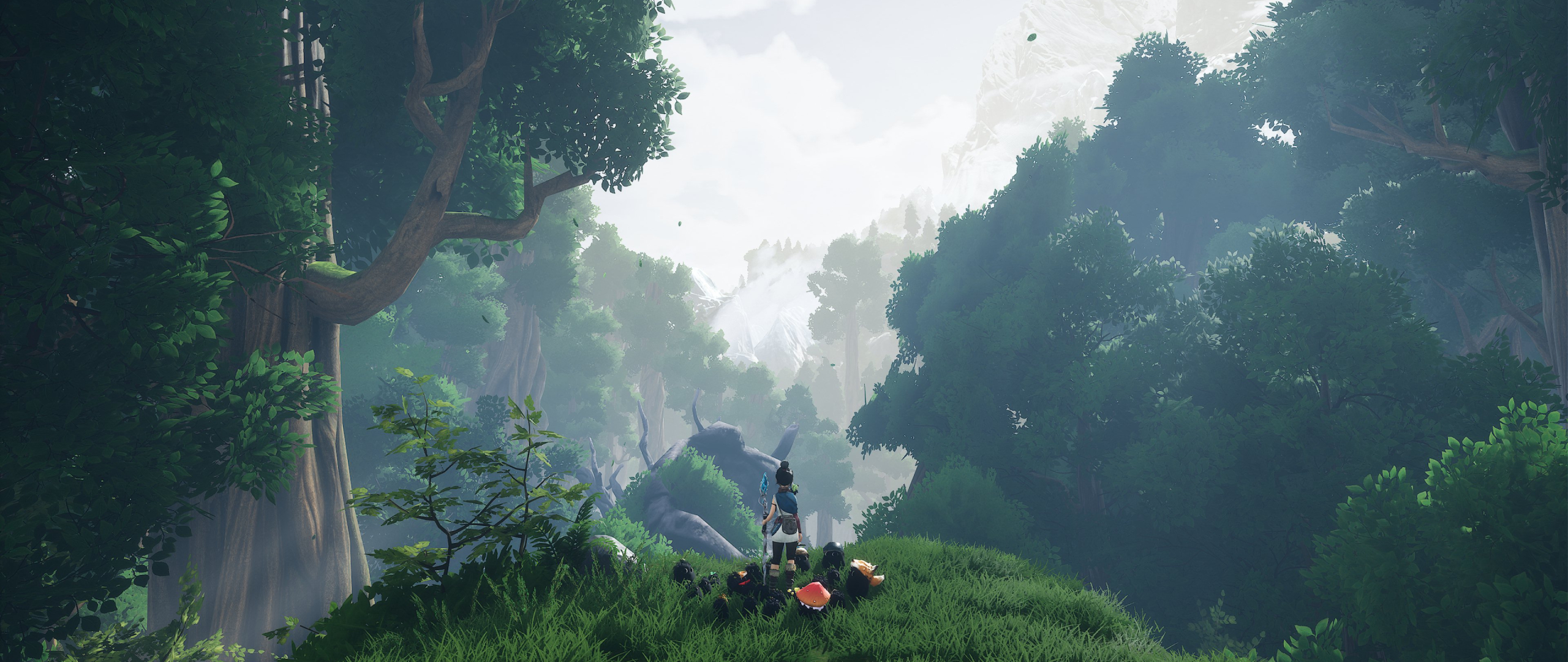Laptop Mag Verdict
While it may feel mechanically familiar, every moment in Kena: Bridge of Spirits is powerful thanks to its breathtaking visual design and the most gripping soundtrack of the year.
Pros
- +
Gorgeous world
- +
Brilliant score
- +
Satisfying puzzles
- +
Tight combat
- +
Wondrous exploration
Cons
- -
Lacking distinct biomes
- -
Some simple bosses
- -
Cutscene loading screens
Why you can trust Laptop Mag
Kena: Bridge of Spirits is Ember Lab’s first video game release, recently launching on PS5 as a console exclusive. Its excellent Pixar-esque animation took the PlayStation community by surprise when it was revealed at Sony’s Future of Gaming conference. But with any studio’s first big title, skepticism was brewing regarding the state of the gameplay itself.
While the experience is admittedly rough around the edges, Kena: Bridge of Spirit’s greatest asset is its heart. The warm smile that washes over Kena’s face as she gently greets the adorable creatures of the forest carries the weight of a mountain. Corruption robs the world of its tender hue, and as the player watches its color slowly return, a powerful fulfillment washes over them. The world’s dwindling state tells a story; the history of the people who lived here, how their lives were taken from them, and the ways in which there’s still beauty to be found in the destruction.
Amidst Kena’s palpable spirit is a phenomenal, authentic Balinese soundtrack, a tight combat system, incentive to explore its lurid forests, and a warm, gorgeous world. Kena: Bridge of Spirits is a familiar experience, but its soul is far stronger than many of the titles it takes inspiration from. It’s easily one of the best PS5 games of the year.
Kena IS the Bridge of Spirits
Kena: Bridge of Spirits boasts a simple narrative that is too safe to be compelling at times. This inoffensive script is bolstered by the game’s potent presentation, as every cutscene is brought to life by stunning animation and a soundtrack that sends goosebumps throughout my body. Not much time is wasted on the game’s cutscenes, instead placing focus on learning about the world through environmental storytelling.

We never discover the full breadth of Kena’s life; I appreciate that her backstory is occasionally hinted at, yet still remains obfuscated. There are many questions players will have after the conclusion, and while that might bother some, it’s beneficial towards the game’s central themes: This isn’t about Kena. She’s quietly battling demons from her own past, but her focus is how she can help the spirits who are still trapped in this village. Kena displays incredible strength by overcoming the sadness that could destroy her. These moments are powerful, and are easily my favorite story beats in the game.
Overall, the central story of Kena is simple. She’s on a journey to become a more powerful spirit guide, and she comes across the game’s central village with the hope of freeing those who are trapped there. With this expansive premise, every forthcoming story revolves around saving the spirits themselves, who all seem to have perished at the hands of one mysterious cataclysmic event. There’s a good sense of mystery in Kena, and although the narrative is simple at times, the incredible presentation makes up for it.
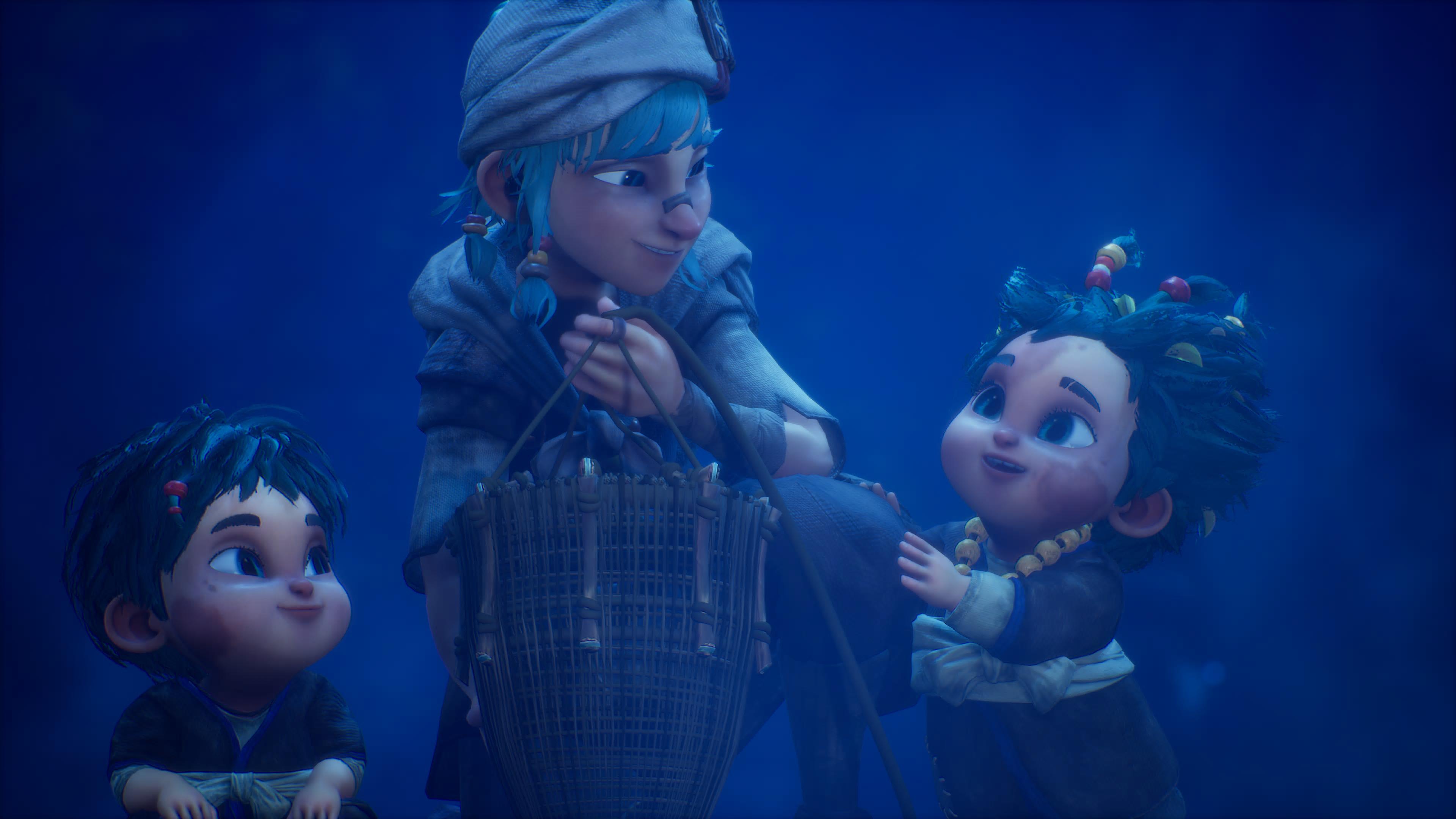
However, it’s bizarre that some of Kena’s story isn’t told through in-game cinematics. This isn’t an issue in most cases, but it’s occasionally frustrating when an emotional moment is interrupted by the flash of a loading screen. The jump from in-engine to pre-rendered is typically very fast, but the few moments where you see a wallpaper pop up as the next story-beat loads, the immersion is broken.
Sign up to receive The Snapshot, a free special dispatch from Laptop Mag, in your inbox.
Kena against the corruption
Kena’s gameplay mechanics harken back to the systems found in classic action adventure platformers from the PS2-era. It doesn’t tread new ground, as the game possesses similarities to Ratchet & Clank, Jak & Daxter and Beyond Good & Evil, but that familiarity isn’t a detriment; straightforward action adventure platformers have been sorely missed.
Throughout Kena’s most intense encounters, players will swiftly dash away, pull back the string on their bow and release to pelt enemies, and jump through the battlefield looking for a chance to unleash a combo with their staff. While the fundamental fighting is simple, it feels tight and satisfying. Players can dodge roll, light attack, heavy attack, shoot arrows, throw bombs, do explosive dashes, and channel a number of other special moves that they’ll unlock throughout the game. But most importantly, the player can parry.

Kena’s parry is shockingly powerful, but the strict timing means you need to press the block button just before an enemy hits you. With a specific upgrade, a successful parry means you get a Rot action. With this, Kena can heal herself, deal significant amounts of damage by powering up one of her attacks, slow down an enemy, or destroy a corruption seed to prevent more enemies from spawning.
During some of the game’s harder bosses, unloading waves of destruction upon them after successful parries is gratifying. My favorite special ability allowed me to channel a heavy attack into a projectile of Rot towards foes. Other abilities allow the player to toss bombs that slow down time or shoot piercing arrows, each being paramount in Kena’s survival against the hardest bosses in the game.
Kena’s base gameplay mechanics harken back to the systems found in classic action adventure platformers from the PS2-era. The game won’t be treading new ground, as it’s similar to Ratchet & Clank, Jak & Daxter, and Beyond Good & Evil, but that familiarity isn’t a detriment; straightforward action adventure platformers have been sorely missed in the video game world, and Kena solidifies itself as a great one.
While there are a number of good bosses in Kena, some aren’t particularly memorable. Nearly every boss is humanoid, and a number of them share similar movesets and visual designs.
However, this is likely just a limitation of the setting, as going too wild with monstrous bosses might have taken away from the point; the player is saving the spirits of deceased villagers, so finding an excuse to fight a mythical beast is not easy.

I wish Ember Labs gave the player more to work with mechanically, since the best bosses in the game are the ones that do something new and memorable. For example, one of my favorite bosses surrounds the player with half a dozen corrupted mirrors, with each pane showing a reflection of the boss channeling something. If you fail to shoot the correct reflection before he finishes channeling, you’ll get hit with some serious pain.
It’s also disappointing that few of the standard encounters don’t offer much of a challenge. There are plenty of tough bosses throughout the game, but individual fights often seem like an excuse to just smack or shoot enemies; this is still fine, since the combat is so good, but I would’ve loved for each fight to be more threatening.
Sense of adventure
Kena’s exploration and puzzle progression are consistently great. With every area, players get their hands on a new ability that allows them to explore the village in novel ways and add more flavor to the combat. For example, bombs can be used to create new paths and clear obstacles, but they can also blow up enemies. Similarly, the bow and arrow functions as a great ranged weapon, but it’s also vital when shooting crystals to spark the power in certain puzzles.
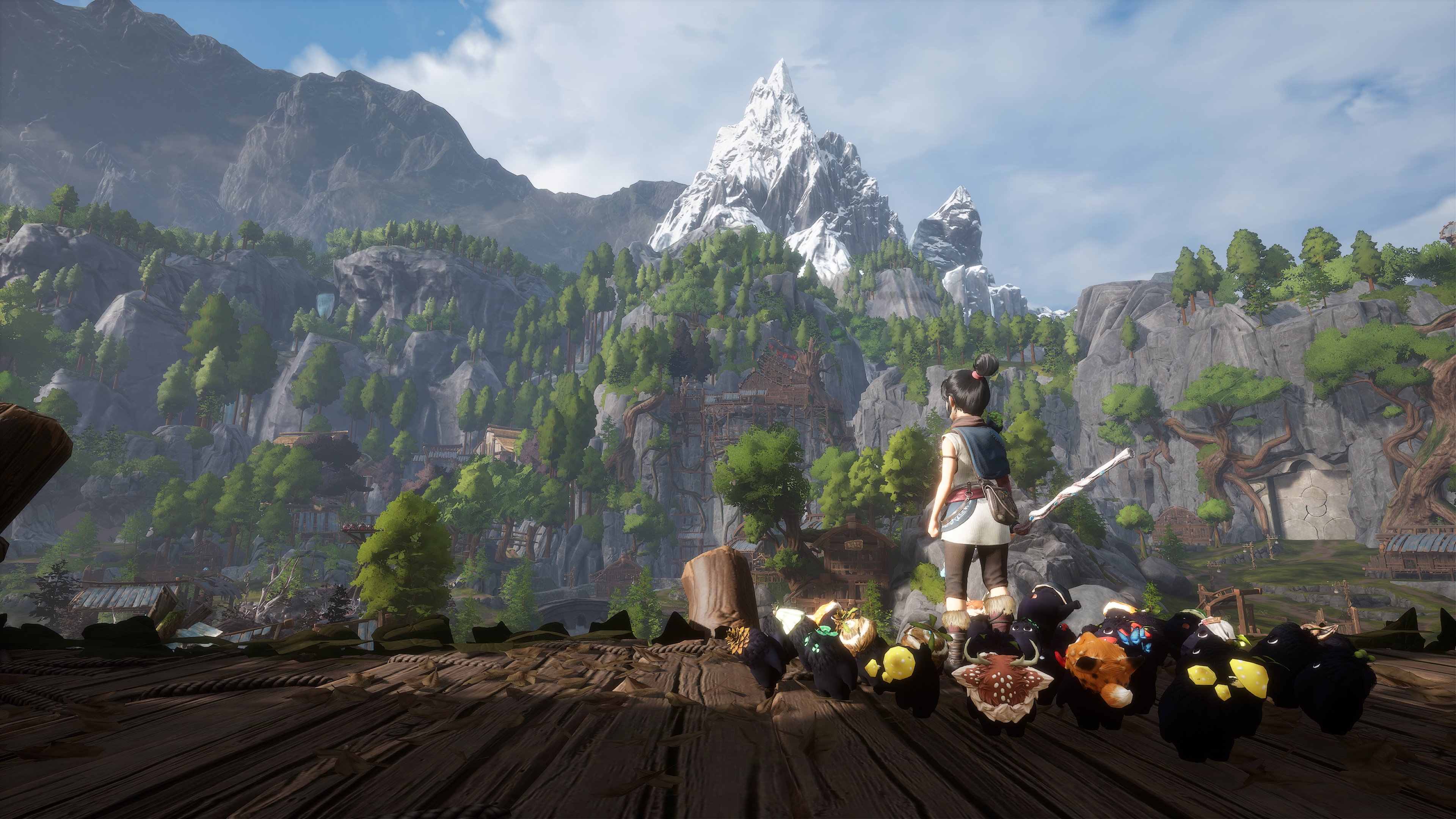
The world is also populated by plenty of natural riddles and secrets that inspire a desire to explore. Puzzles can unlock new hats for the cute little Rot, Karma to upgrade Kena’s abilities, and Spirit Mail to clear deep-rooted corruption and access new parts of the village. Players can use their Rot to move objects and dash through special gates to teleport across the world. The combination of these elements, along with the ability to double-jump and climb along rocks, lets Ember Lab create a slew of fresh puzzles that challenge the player while they progress through the game.
What’s especially brilliant about the Spirit Mail system is that it gives gamers like me a severe case of FOMO (fear of missing out). The puzzles don’t give you arbitrary stat-boosters or cosmetics, but rather finding a secret within the world of Kena means unlocking new areas of the game. These areas are small, but the idea of not witnessing even a little bit of these gorgeous environments inspires a significant desire for me to find every one of these items.
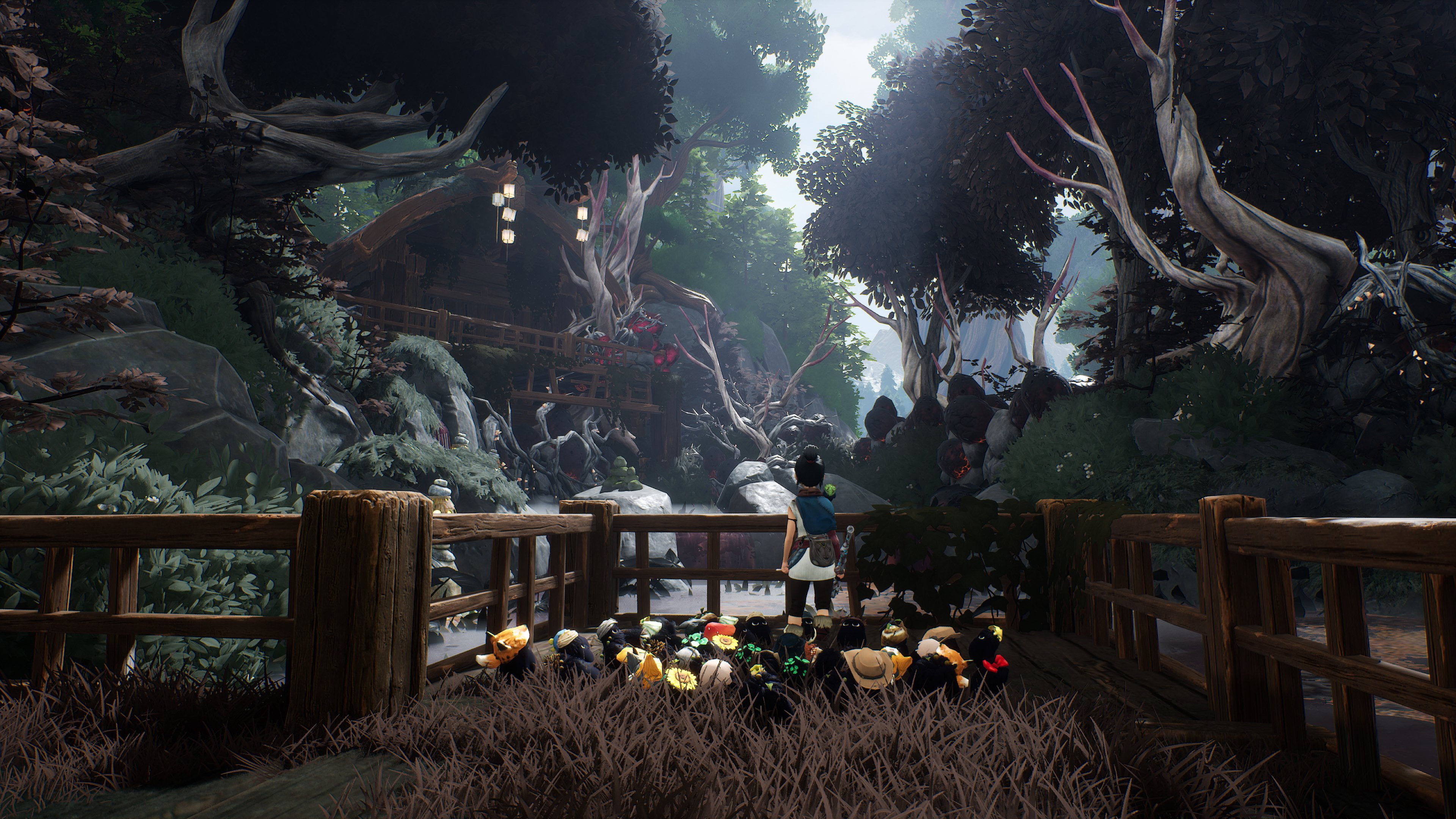
Also, Kena does not force assistance onto the player if they’re struggling with a puzzle. Unlike other games, being stuck for 15 minutes won’t cause Kena to suddenly say “perhaps I need to activate these switches in the correct order to proceed.” Uncharted handles this even better by allowing the player to choose if they want assistance, whereas Kena does not offer hints at all. This could bother those who might prefer to get help, but I’d rather not have hints than it be forced onto me in an immersion-breaking manner.
Staggering world
The world of Kena is overwhelmed with beauty. Little things like the markings etched along stones, the dozens of little offerings placed at shrines, and the satisfying crispness of every falling leaf and grass blade makes the world feel lifelike. Ember Lab's focus on lurid foliage makes the experience more fantastical than the real world, which is bolstered by designs that don’t strive for realism. Tops of trees in the distance look fuzzy and the game’s ponds have a painterly brush-stroke quality. Every plain, field and forest boasts distinct elements that make it stand out from other parts of the world.

Every bit of it is breathtaking; wood planks slightly jut out from dirt paths, pink and white flowers grow amidst dark patches of grass, and diversely structured trees have a sea of moss growing up along them. Kena’s world is full of striking detail, providing a sensation akin to exploring a painting.
While Ember Labs did a good job giving Kena a distinct feel, the lack of diversity in biomes and hues is a bit disappointing. Every area in the game possesses impressive graphical fidelity, an alluring color palette, and a striking amount of detail, but they follow a similar fundamental structure. This is likely intentional, as for the most part, the game takes the player across the corners of a single village.
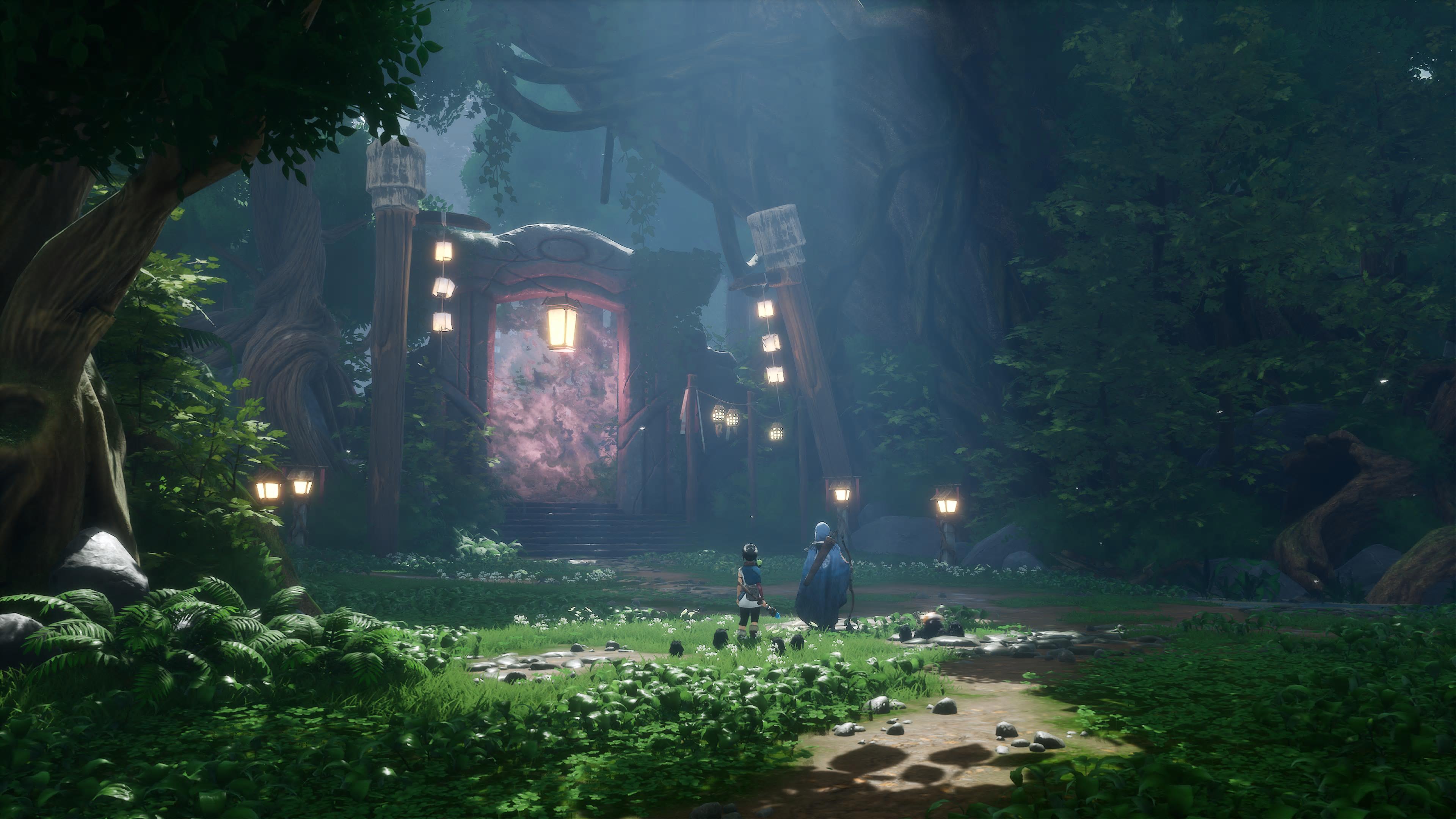
There’s plenty of well thought out design throughout this setting, from the expansive ponds to the gorgeous forests, but the game inspires a sensation to explore beyond. A brief glimpse at a village overwhelmed by flame and the game’s finale in the snowy Mountain Shrine are ephemeral; the bulk of Kena’s environment revolves around the rocks, grass, trees, and mud. These brief moments of ice and fire are too short for their own good, and I would love to see what other areas of this world could look like in a potential sequel.
Kena’s brilliant soundtrack
Kena: Bridge of Spirits is bolstered by a breathtaking soundtrack utilizing the incredible talents of gamelan group, Gamelan Çudamani. Gamelan is a type of traditional ensemble music that originates from Indonesia, with Çudamani in particular possessing Balinese roots. With the help of composer Theophany, the soundtrack features a brilliant mix of invigorating percussion instruments layered beneath gorgeous xylophone and bamboo flute melodies.
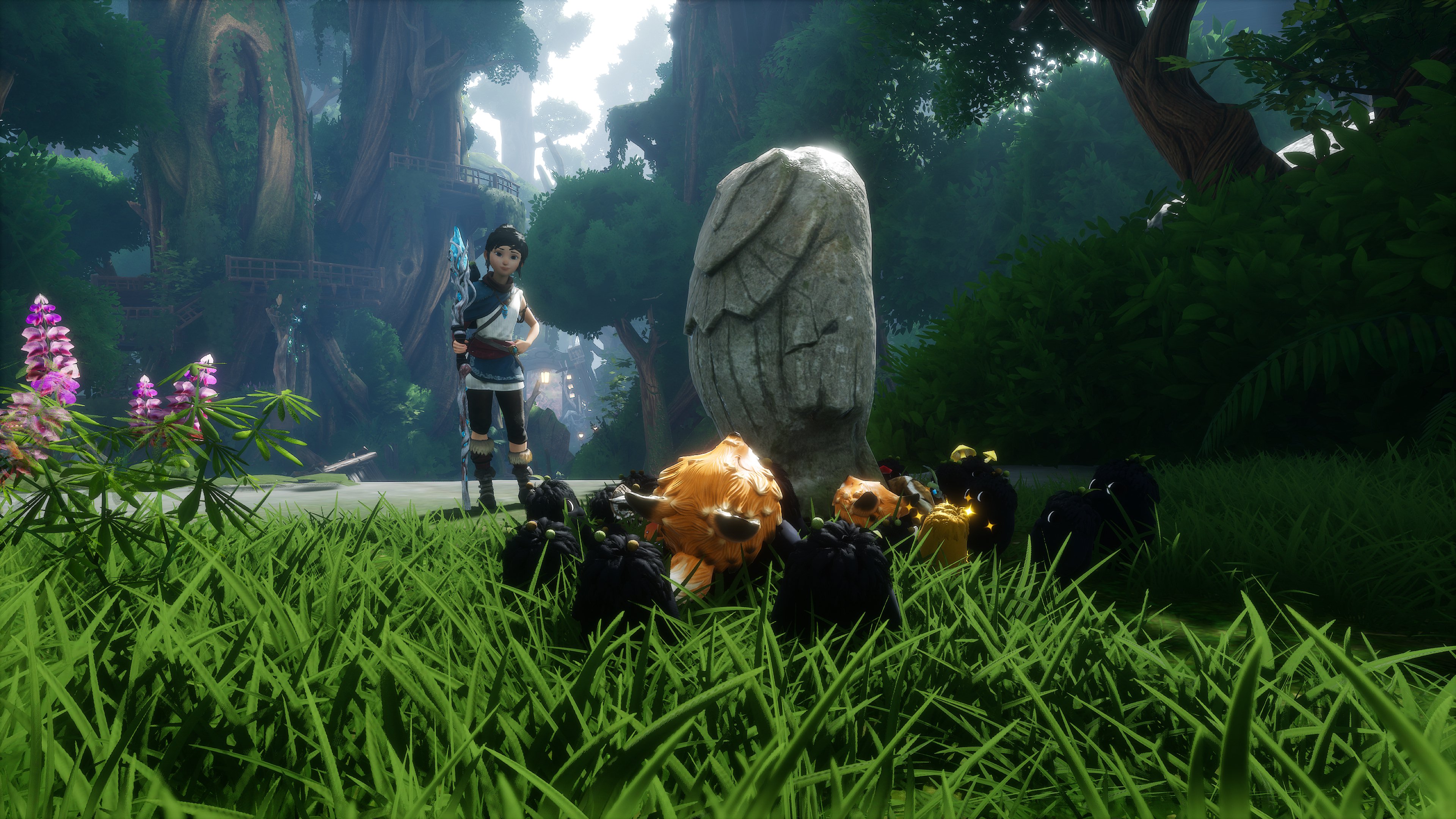
Few of the game’s tracks are reused during the first third of the game. This stopped being the case as I progressed further, which is when I noticed the return of certain prominent melodies. But even then, the amount of original compositions featured throughout Kena is impressive; even small areas seem to feature their own unique music.
The game’s natural shifting of one sound to another also helps make it feel more like a film score than a soundtrack. While attempting to solve a puzzle located close to a gorgeous lilypad-filled pond, an ominous xylophone melody accompanied me. If I failed to activate the switches of this puzzle in the correct order, enemies spawned while drums suddenly thrust themselves into the track. Out of nowhere, the already present ambient music flips into a new battle track. Rather than playing a new song entirely, Kena: Bridge of Spirits makes the music occasionally shift according to the player’s actions.
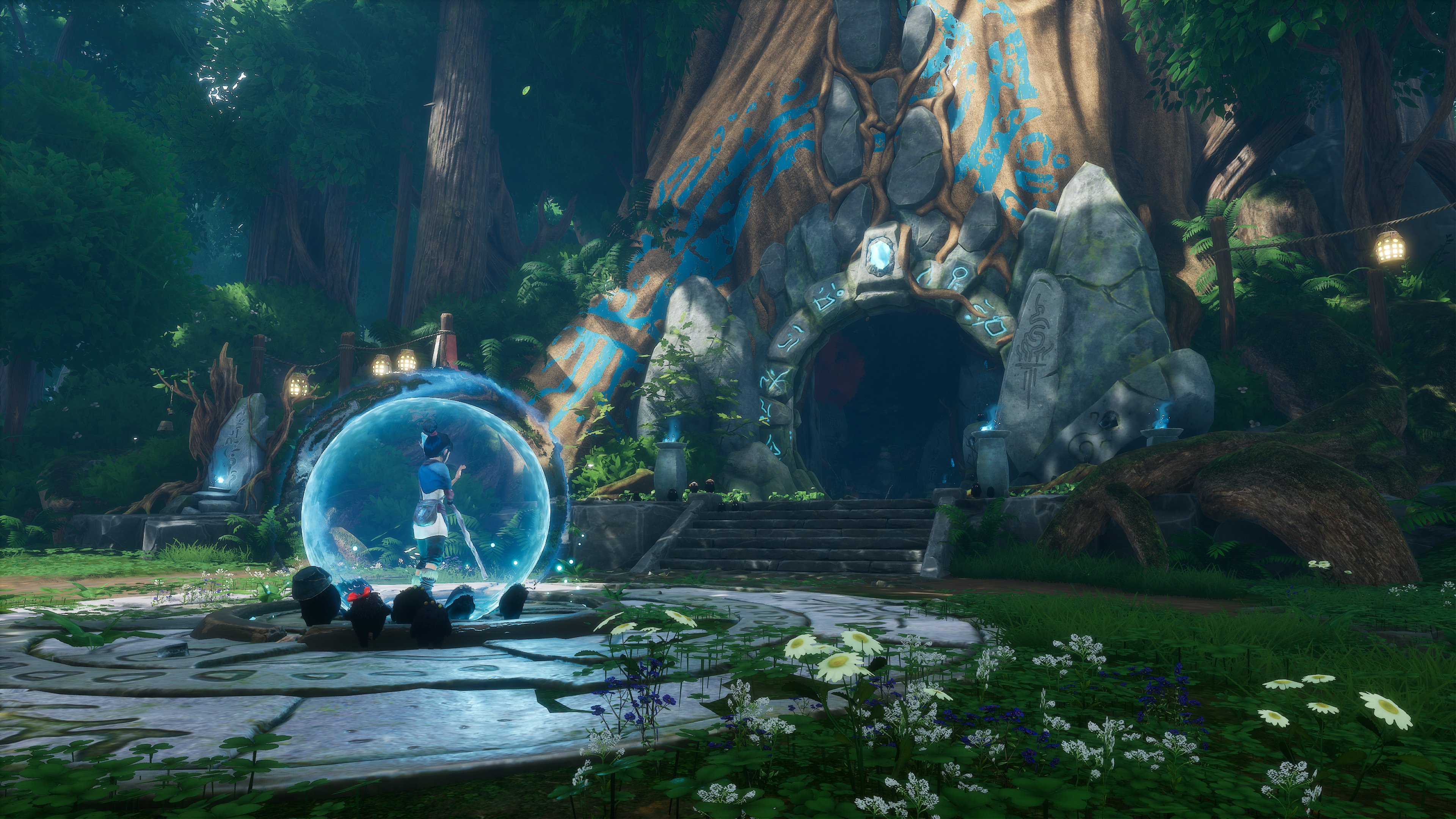
Çudamani’s original music and composition are paramount to the feel of the game; the group’s lead singer and associate director, Emiko Susilo, even provides the voice for Kena. Susilo’s voice is full of ferocity, with her ethereal vocals breathing life into an already evocative world.
Bottom Line
Kena: Bridge of Spirits boasts a potency I did not anticipate. Amidst its familiar mechanics and occasionally amateurish design lies emotional mastery. Ember Labs has concocted a brilliant adventure that speaks to the heart before the mind, and although there’s plenty of room for improvement, this visceral experience inspires a sensation of wonder.
With the help of a phenomenal original soundtrack, brilliantly structured environments, a true sense of exploration and a tight combat system, Kena: Bridge of Spirits is one of the best games of this year.

Self-described art critic and unabashedly pretentious, Claire finds joy in impassioned ramblings about her closeness to video games. She has a bachelor’s degree in Journalism & Media Studies from Brooklyn College and five years of experience in entertainment journalism. Claire is a stalwart defender of the importance found in subjectivity and spends most days overwhelmed with excitement for the past, present and future of gaming. When she isn't writing or playing Dark Souls, she can be found eating chicken fettuccine alfredo and watching anime.
